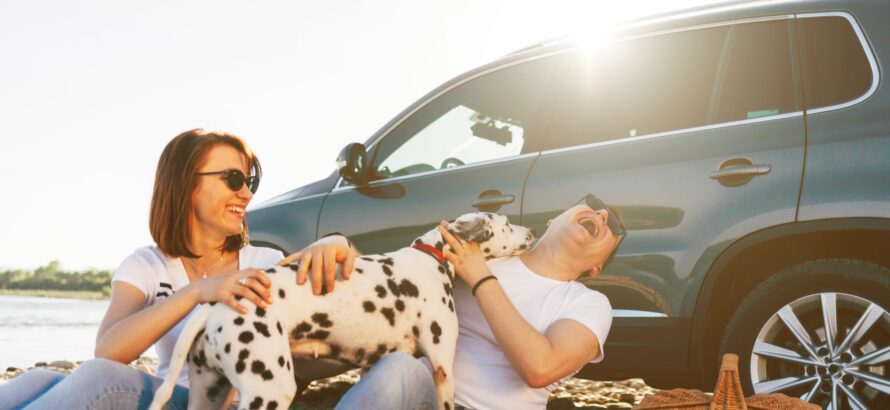
Tips for Taking the Bite Out of Your Friendship
We love our dogs, and many of us consider them part of our families. But dogs aren’t people, and they need our help to head off or correct any behaviors that can be dangerous, especially biting.
The American Veterinary Medical Association (AVMA) estimates that more than 4.5 million people are bitten each year in the United States, with nearly a fifth of those victims requiring medical care. Children are at the greatest risk of being bit, in part because their sometimes unpredictable behavior can trigger predatory, territorial or defensive behavior in some dogs.
Experts stress that any dog has the potential to bite someone. Prevention is a three-part strategy:
1) Learn canine body language. Few dogs bite “without warning.” In fact, behaviors many petowners see as “cute” are often signals that a dog is increasingly uncomfortable in a given situation. If these signals are ignored, the dog may escalate to a bite without further warnings. In addition to a tightened or rumbling upper lip, other signs include:
Yawning, lip-licking, turning the head away and wide eyes showing white (“whale eye”). These are all external signals that a dog is not comfortable with a situation. Some dogs will escalate to a growl or snap the air before biting; others won’t. It’s up to adults to ensure safe interactions between children and pets, and to teach children to behave around dogs they know as well as dogs they don’t. (The AVMA offers good information for parents here.)
2) Set up a safe environment for your dog to minimize triggers. Even if they’re not inside on a regular basis, make sure your dogs are socialized and included in family activities. All family members and visitors – especially children — should treat dogs respectfully and act safely around them. If your dog isn’t comfortable around strangers, children or your Uncle George, don’t force them together. Let your dog relax in a crate, outside or in another room until company is gone.
Recognizing an unsafe situation is critically important. Although vicious attacks by strange, free-roaming dogs make the news, a biting dog is more likely to be known to the victim, if not a family dog then one owned by a friend or neighbor.. Every dog and every situation should be assessed.
3) Help dogs of any age learn that it’s never appropriate to use teeth on people, even during play. Make use of training classes to lay a good foundation. Dogs of all ages use their teeth as we use our hands, as tools and as a means of communication with others of their species. Biting on its own is not abnormal, and many (but by no means all) dogs can learn to become safer family members through behavior modification – your dog’s, your child’s and your own.
Training for Puppies and Young Dogs
Teaching a dog not to bite is most effective when started at a young age. For puppies or young dogs that are experimenting with their teeth – which is normal for all dogs until they learn appropriate behavior — a puppy class or private sessions with a reputable dog trainer will help guide your dog in the right direction. Ask your veterinarian for a recommendation for a good trainer in your area.
In-person training is more helpful than training tapes, websites or books, especially for inexperienced or first-time dog owners. A good trainer understands body language – both yours and your dog’s – and has a sense of proper timing that’s key to getting the message across to your young dog. The trainer can assess how much your puppy learned from his mother and littermates, and can provide tips to help fill any gaps in his behavioral foundation.
Young, unneutered male dogs as well as dogs that have little interaction with people are at higher risk of biting. Neutering, socializing, training and keeping a dog feeling that he’s part of a human family will reduce the chance of a bite. Be sure to talk with your veterinarian regarding spaying or neutering your pet.
Getting help with older dogs
For older dogs who are biting (or for young ones who are not responding to appropriate training), it’s important to get help from a board-certified veterinary behaviorist or a certified applied animal behaviorist.
You may be surprised to find out that a veterinary behaviorist will take a complete medical history of your dog, which may include diagnostic tests. That’s because in some cases a medical issue may be the cause of a pet’s unwanted behavior. A dog in pain from illness, injury or old age may be more likely to snap than one in perfect health.
Also, a professional veterinary or certified animal behaviorist will assess your dog’s past training. The wrong kind of training – such as dominance training — used with a dog who’s already biting people can make the problem much worse. Don’t delay in getting help. Aggressive behavior does not improve on its own, and often gets worse over time.
Dogs are called “Man’s Best Friend” for a reason. While they can make friendly and loyal companions, a few easy steps like: 1) Learning canine body language, 2) Setting up a safe environment for your dog and 3) Seeking appropriate preventive training for dogs of any age are all key components to decreasing the chance of a biting incident with your family, friends and other animals.
Teaching your dog good behavior is part of being a responsible pet owner.



